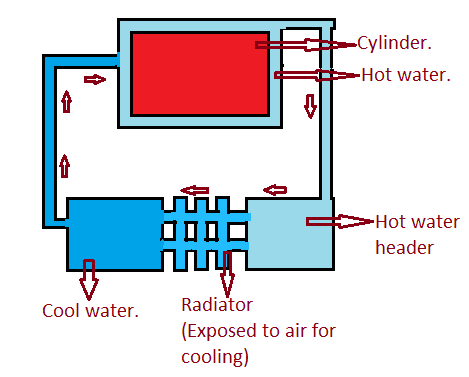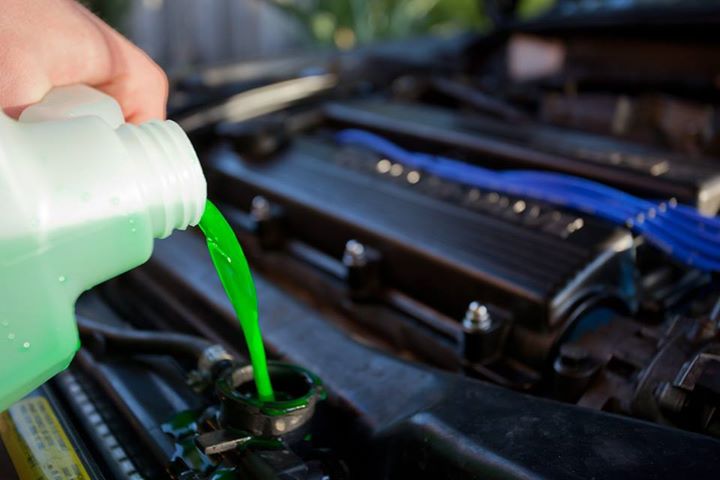Whether you have a new vehicle or an older model, understanding the fuel supply system in your car is essential. The fuel supply system includes all of the parts and components that ensure that your engine is receiving the right amount of fuel, at the right time, to create optimum performance. This blog post will provide an overview of the various components and systems that make up a fuel supply system.
What is fuel suspension system?
The fuel supply system is an integral part of every vehicle. It ensures that your engine receives the fuel it needs to run properly and efficiently, making it essential for the safety and performance of your car. In order to understand how the fuel supply system works, it’s important to know all the components that make up this system. Let’s take a look at some of the most common components found in a fuel supply system.
Fuel supply system parts in the Car?
Below are the parts of Fuel supply system in the Car
- Air filter
- Carburetor
- Choke cable
- Exhaust gas recirculation valve (EGR valve)
- Fuel cap or fuel filler cap
- Fuel cell
- Fuel cell component
- Fuel cooler
- Fuel distributor
- Fuel filter
- Fuel filter seal
- Fuel injector
- Fuel injector nozzle
- Fuel line
- Fuel pump
- Fuel pump gasket
- Fuel pressure regulator
- Fuel rail
- Fuel tank
- Fuel tank cover
- Fuel water separator
- Intake manifold
- Intake manifold gasket
- LPG (Liquefied petroleum gas) system assembly
- Throttle body
Air Filter
The air filter is located near the engine and its purpose is to clean incoming air before it enters the combustion chamber. It prevents dirt, dust, and other contaminants from entering into the combustion chamber which can cause damage to the engine. An air filter should be replaced periodically as part of routine maintenance on your vehicle.
Carburetor
The carburetor mixes air and gasoline together to create a combustible mixture for your engine. It has several moving parts which include float valves, jets, levers, and linkage arms that control how much fuel is mixed with air as well as how it is delivered to the engine cylinders. A properly functioning carburetor ensures optimal performance of your vehicle’s engine by providing enough fuel for combustion while also using as little gasoline as possible.
Fuel Pump
The fuel pump is responsible for delivering pressurized gasoline from the gas tank to the carburetor so it can be mixed with air prior to entering into the combustion chamber. The pump must be able to deliver enough pressure so that enough gasoline can enter into the carburetor in order for complete combustion to take place in each cylinder of your vehicle’s engine.
Fuel Injector
The fuel injector is another important component of a fuel supply system because it regulates and delivers pressurized gasoline directly into each cylinder individual based on demand from each cylinder’s respective spark plug firing order. Fuel injection technology has become increasingly popular over time because it creates more efficient combustion processes than traditional carburetors do.
Choke Cable
The choke cable is a throttle cable that connects the carburetor or other type of fuel injection system to the engine control module (ECM). This cable helps regulate air/fuel mixture and helps start a cold engine. It is also used to adjust idle speed when a vehicle is running at different temperatures or altitudes.
Exhaust Gas Recirculation Valve (EGR valve)
The EGR valve is used to reduce exhaust emissions by recirculating some of the exhaust gas back into the combustion chamber. This helps reduce nitrogen oxides (NOx) in exhaust gases, which can be harmful to both people and the environment.
Fuel Cap or Fuel Filler Cap – The fuel cap or fuel filler cap prevents dirt and debris from entering your vehicle’s gas tank while still allowing air to enter for proper ventilation. It also helps keep gasoline vapors from escaping into the atmosphere, reducing air pollution.
Fuel Cell Component
A fuel cell component is any part of a fuel cell that helps convert chemical energy into electrical energy through an electrochemical process. These components include electrodes, electrolyte membranes, catalysts, current collectors, and other parts essential for efficient operation.
Fuel Distributor
The fuel distributor is responsible for delivering pressurized gasoline evenly throughout each cylinder of an engine so that it combusts properly during each cycle of operation. It performs this task using several small jets connected via tubing inside its housing unit which are responsible for controlling flow rate and pressure levels accordingly.
Fuel Filter Seal
A fuel filter seal is designed to keep contaminants out while also keeping gasoline vapors in so they can be properly vented away from your engine compartment instead of into it where they could cause damage over time due to corrosion or excessive heat buildup from combustion processes occurring nearby. They are typically made out of rubberized materials like neoprene or silicone but may also be constructed out of metal if needed depending on application requirements such as with diesel engines where higher operating temperatures exist than those found in traditional gasoline powered vehicles today.
Fuel Cooler
The fuel cooler keeps the temperature of the fuel within an engine’s specified range. It helps to regulate the flow of liquid between two points and can also be used as a reservoir for cooling liquids like gasoline. The fuel cooler helps keep the engine running at its peak performance level by ensuring that there is no vaporization or boiling of liquid due to heat buildup.
Fuel Injector Nozzle
Fuel injector nozzles are responsible for controlling the amount of fuel that is delivered from a vehicle’s fuel pump into the combustion chamber. They use high-pressure jets of fuel to atomize it into tiny droplets before it enters the combustion chamber, which helps ensure that it burns evenly and efficiently. The nozzle also helps prevent any contamination from entering the engine, keeping it clean and running optimally.
Fuel Line
The fuel line is used to deliver gasoline from a vehicle’s tank to its engine. It consists of flexible tubes made from either metal or rubber materials, depending on where in a vehicle’s system it needs to be used. Fuel lines should be checked regularly for leaks or other signs of wear and tear, as even small holes can cause major damage if left unchecked.
Fuel Pump Gasket
Fuel pump gaskets help make sure that there is an airtight seal between two parts within a vehicle’s fuel system, such as between the pump and its housing or between different components within a carburetor or injector setup. They are usually made out of rubber or silicone material and should be replaced when they become worn out or cracked in order to maintain proper function within your vehicle’s system.
Fuel Pressure Regulator
Fuel pressure regulators are devices that are designed to control how much pressure is applied when pumping gasoline into an engine’s cylinders during combustion cycles. This ensures that only enough pressure is applied so that adequate amounts of fuel enter each cylinder while preventing overloading them with too much gas and causing detonation issues which can damage an engine over time if not properly regulated.
Fuel Rail
The fuel rail connects all of an internal combustion engine’s cylinders together and distributes pressurized gasoline from the main supply line through it during operation. It acts as a conduit for delivering precise amounts of gasoline needed for efficient ignition in each cylinder at any given time, allowing for smoother operation overall without losing power output due to incorrect delivery ratios in certain areas of an engine’s design layout..
Fuel Tank
The fuel tank is an essential component of your car’s engine. It contains the gasoline or diesel necessary to power your vehicle.
Fuel Tank Cover
The fuel tank cover is used to protect the fuel tank from dirt and debris while also helping to keep it sealed tightly so as not to leak any gasoline or diesel fumes into the atmosphere.
Fuel Water Separator
The fuel water separator helps remove any water that may have inadvertently gotten into your car’s gas tank. This can occur if you live in an area with high humidity or if you use a bad batch of gasoline that has been contaminated with water. The fuel water separator helps ensure that only clean, dry gas gets into your car’s engine for maximum efficiency and performance.
Intake Manifold
The intake manifold is responsible for controlling the flow of air from the intake valve to the combustion chamber in an internal combustion engine. It also helps deliver more precise amounts of air/fuel mixture to each cylinder for optimal performance.
Intake Manifold Gasket
The intake manifold gasket prevents air leaks between the manifold and other components like cylinders heads and intake valves while also helping reduce vibration noise coming from the engine bay when driving at higher speeds.
LPG System Assembly
An LPG system assembly includes all of the necessary components needed to convert a conventional petrol-powered engine into one running on Liquefied Petroleum Gas (LPG). This includes items such as tanks, lines, regulators, injectors and filters that help regulate LPG flow from storage tanks located in your trunk or undercarriage into your car’s combustion chamber where it mixes with air for efficient burning during ignition cycles.
Throttle Body
The throttle body is responsible for controlling airflow volume by opening/closing valves in response to pressure changes caused by accelerator pedal input from drivers while they drive their cars accelerating/decelerating accordingly.
Conclusion:
A vehicle’s fuel supply system consists of many different components ranging from filters and pumps all the way up to injectors and regulators. Each component serves an important role in ensuring optimal performance by delivering just enough gas into each cylinder at precisely just when needed so there isn’t any wasted energy or power output lost due to incorrect ratios or timing issues with delivery of combustible materials directly into engines cylinders during operation cycles within engines themselves. Understanding these components will help you better maintain your vehicle’s systems so they are operating at peak efficiency levels at all times!


